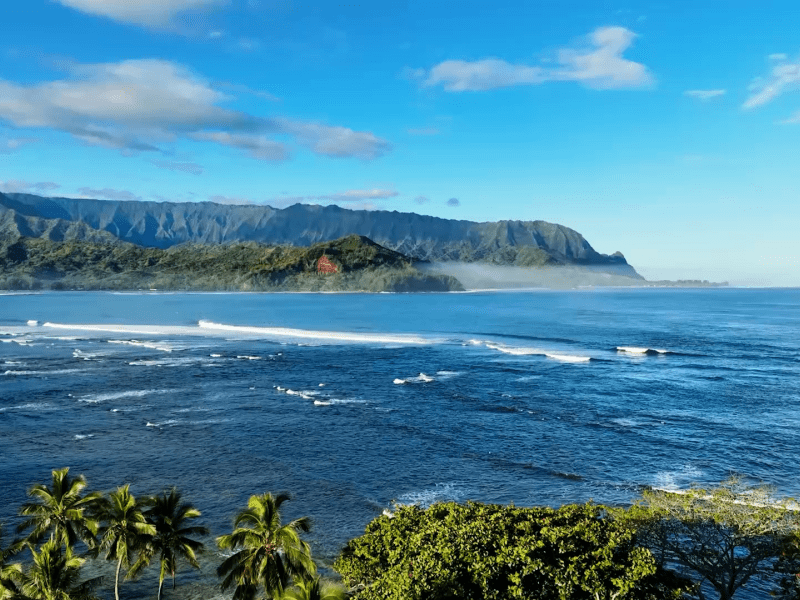Turning the Tide: How to Inspire Collective Action on World Water Day
Dive into this year’s theme, Water for Peace, exploring how this precious resource flows through boundaries and carries profound impacts.

The first World Water Day was celebrated over 30 years ago with a tenacious goal to raise awareness and inspire global action for water-related issues. While this day has undoubtedly ignited a ripple effect of positive change, the numbers show that there’s still significant work to be done.
- 2.2 billion people still lack access to safely managed drinking water.
- Unsafe drinking water causes over one million deaths each year.
- A mere 0.5% of water on Earth is considered available and usable freshwater.
- Roughly 50% of the world will experience extreme water scarcity for part of the year.
- Water-related disasters continue to dominate the list of natural disasters.
As the global population increases and climate change continues its course, experts say these numbers are still on the rise. But as a dose of uplifting inspiration, we want to remind you that the news is not all bad. Since 2000, billions of people have gained access to sanitation services and basic drinking water, proving that progress is possible.
WORLD WATER DAY 2024: WATER FOR PEACE
This year’s theme, Water for Peace, highlights the idea that water has the power to create peace or spark conflict. As the UN explains, when water is scarce, polluted, or inaccessible, it can become the main source of tension between communities and countries. Over three billion people rely on water sources that cross national borders. 153 countries share lakes, rivers, and aquifers with their neighboring countries, yet only twenty four report existing agreements for these shared water sources.
These concepts of shared water and Water for Peace become even more critical as the global population grows and the impacts of climate change continue to devastate. It’s more important than ever to unite around this precious resource, making it a collective priority to protect and conserve it.
Water can be an incredible tool for peace and a catalyst for sustainable development as long as we can all work together to understand, acknowledge, and balance the intrinsic human right and need for it—and the challenges that surround it. Therein lies the mission of World Water Day.
THE RIPPLE EFFECT OF WATER
As highlighted in the WWD theme, water has profound implications in the context of global conflict. Let’s dive into some of the ways water intertwines with climate change—and how these two have the power to generate a ripple effect felt across industries, nations, and various environmental topics.
- Climate Change: Water and climate change share a direct relationship. Increasing global temperatures impact when, where, and how much precipitation falls, causing severe droughts, devastating floods, and more frequent extreme weather events. This variability surrounding water plays a role in the following issues.
- Pollution: Scientists believe that shifts in precipitation will lead to more floods over time, increasing runoff that will carry contaminants into our water sources. This will further pollute water supplies, limiting access to clean water for both humans and ecosystems. Fertilizer runoff can cause algal blooms that diminish oxygen levels in water, generating toxins dangerous to fish, animals, and humans. These algal blooms can survive purification processes, impacting tap water, industrial water supplies, and waterfront communities.
- Sea Level Rise: As temps rise and glaciers and snow covers (both important stored water supplies) melt at an alarming rate, sea level rise remains a huge threat. Rising sea levels threaten to contaminate freshwater aquifers and other groundwater sources, which would decrease supplies for humans and ecosystems. Sea level rise also accelerates shoreline erosion and additional damage for vulnerable coastal communities.
- Water-Related Disasters: In recent years, we’ve seen a significant rise in water-related disasters such as floods, droughts, wildfires, storms, landslides, extreme cold, water-borne diseases, and beyond. Shifts in the hydrological cycle are increasing the frequency and intensity of water-related events, as flood-related disasters have more than doubled since 2000, and the duration of droughts has risen almost 30%.
- Food Insecurity: On average, agriculture uses roughly 70% of freshwater withdrawals, as it takes anywhere between 2,000-5,000 liters of water to produce the daily food supply for one person. Water scarcity directly exacerbates food insecurity, which disproportionately impacts Black, Native American, and Latino individuals.
- Environmental Injustices: Around the world, marginalized and impoverished communities have long been forced into the world’s most polluted areas through deliberate systems of oppression. Disparities in water access further perpetuate these inequalities, widening the gap between marginalized and privileged communities. In the US, BIPOC and Latinx communities are still more likely to come into contact with unsafe drinking water, and some experts say that race is the key factor in determining access to safe water supplies. Across the globe, over half of the people who do not have basic access to drinking water live in sub-Saharan Africa, where less than 33% of the population has basic access. Yet over 97% of people in North America and Western Europe have basic access.
This is just the tip of the iceberg, as experts admit that nearly every natural disaster can be traced back to water in one way or another.

WAYS TO PRACTICE WATER STEWARDSHIP
The truth is that water has the power to make or break the health of our planet and all of its people, and it’s up to all of us to do our part to protect it and increase global accessibility to it. We know that might feel like an overwhelming task, so we outlined a few ways to get your toes wet.
- Prioritize water conservation in your everyday life. Whether you’re an individual or an organization, you can adopt habits to conserve, protect, and manage this precious resource. Eat local, grow your own foods, and reduce your meat consumption. Check your toilets, pipes, and sinks for leaks, don’t flush any harmful materials down your drains, take shorter showers, and don’t let faucets run when you’re not actively using them. Only water your lawn when absolutely necessary, utilize rainwater harvesting systems, and seek plants that can thrive in dry conditions without irrigation.
- Learn about the connection between water and peace. Reading this article is a great start, and you can continue the momentum by reading inspirational stories from around the world. You can also familiarize yourself with Sustainable Development Goal (SDG) 6, which focuses on clean water and sanitation. The SDG 6 website includes an interactive map where you can learn about potential sanitation issues in your region.
- Explore the UN World Water Development Report. The report is launched on World Water Day every year, and it dives into general water and sanitation issues, water issues and solutions surrounding the WWD theme, expert analyses, best practices, and policy recommendations for decision-makers.
- Get inspired by innovative water solutions. In recent years, innovative technologies have introduced a wave of hope for the world water crisis. For example, Drinkwell uses Water ATMs to bring clean water to low-income communities, Ignitia uses remote sensing and machine learning to help farmers avoid extreme weather events, Oneka uses wave-powered buoys to convert ocean water into drinking water. Discover more on the Worldbank website. You can explore and support brands like these that continue to break new ground at the forefront of the global water crisis.
- Engage the people around you. Especially on World Water Day, gather with your friends, family, and neighbors and share photos with the hashtag #WorldWaterDay to spread the word. The UN recommends activities such as peace-themed sporting events, art activities that express what water and peace mean to you, water clean-ups at an ocean, lake, river, or creek near you, sparking conversations that raise awareness around water stewardship and local bodies of water, exploring local water sources that may extend beyond a political boundary. Discover more on the UN website.
- Support advocacy efforts and organizations. We encourage you to follow and support organizations that put water stewardship and equity at the forefront of their planet-centered missions. Some exemplary organizations include the NRDC and Oceanic Global, both of which we support through ongoing partnerships at 1 Hotels.
Always remember that we’re right by your side practicing these methods every single day across our brands and properties.

WATER STEWARDSHIP AT 1 HOTELS
In line with our mission to safeguard the planet, we take great pride in water stewardship at 1 Hotels. We’re deeply committed to responsible water use and conservation, as well as helping our local communities remain resilient as the climate impacts this resource.
- Landscaping and Irrigation: When designing our sanctuaries, we always prioritize landscaping that adapts to the natural environment, nurturing surrounding ecosystems rather than disturbing them. We also utilize efficient irrigation systems that use greywater or rainwater, especially in climates with high yearly rainfall. In Hanalei Bay, our 7,400-gallon rainwater harvesting system helps us save roughly 3.5 million gallons of water per year.
- Filters and Fixtures: Across every property, you’ll find low-flow fixtures and water-efficient filtration systems where you can fill up your reusable 1 Hotels x PATH water bottles. This also helps us reduce single-use plastics, which contribute heavily to ocean plastic pollution.
- Continuous Monitoring: Our innovative building monitoring systems allow us to regularly analyze and optimize our water and energy consumption.
- Responsible Food Practices: We strictly source our seafood from sustainable and responsible fisheries that align with our values. On top of this, we make sure to source local, sustainably grown ingredients, as agriculture consumes over 70% of the worldwide water supply.
- Partnerships for the Planet: Our cherished partnerships with the NRDC and Oceanic Global allow us to approach water conservation from many angles—whether it's protecting our oceans and wetlands or supporting efforts to increase access to safe drinking water.
- Community Education and Engagement: Through initiatives that range from this blog to beach cleanups, we’re always exploring new ways to engage and inspire our teams and communities to safeguard the planet and protect its natural resources.
Join us in honoring and celebrating this precious resource on World Water Day day with sustainable sushi specials, meditations, and more immersive events across our sanctuaries.



















